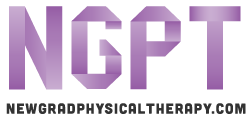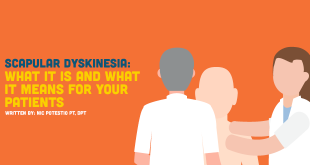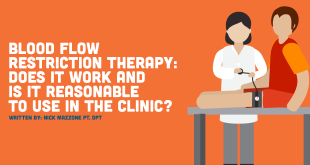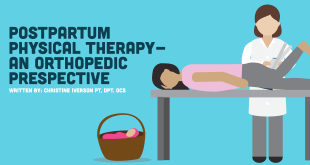The evolution of clinical practice and evidence based medicine is quite interesting to take a step back and look at. There has been an explosion of knowledge and amazing forward progression in evidence, technology, outcomes, and understanding of the human body over the last 100 years. Even within our own field, we have seen a boom in evidence based physical therapy.
There is no doubt that we are far better today than we were 100, 50, 20, or even 10 years ago. The amount of evidence posted in scientific journals, the number of people graduating with PhDs, and the sheer volume of individuals with a general understanding of basic science and the human body are rapidly increasing year by year.
What is the state of evidence based physical therapy?
We can draw some conclusions about the discourse between evidence based physical therapy and clinical practice by looking at a nice survey study conducted by Wong et al. in the early 2000s and published in PTJ in 2007. In this study, a 77-item clinical practice survey instrument was developed and mailed to 457 seven physical therapists who were orthopedic certified specialists (OCS) from the Northeast/Mid-Atlantic regions of the United States. The purpose of the survey was to measure the use of ultrasound among orthopedic clinical specialists.
After all drop outs, 207 surveys of clinical practice were returned. According to the surveys, the respondents indicated that they were likely to use therapeutic ultrasound to decrease soft tissue inflammation (eg, tendinitis, bursitis) (83.6% of the respondents), increase tissue extensibility (70.9%), enhance scar tissue remodeling (68.8%), increase soft tissue healing (52.5%), decrease pain (49.3%), and decrease soft tissue swelling (eg. edema, joint effusion) (35.1%). The respondents used ultrasound to deliver medication (phonophoresis) for soft tissue inflammation (54.1%), pain management (22.2%), and soft tissue swelling (19.8%).
Interestingly, this study can be used to provide insight into changes in the use of ultrasound over time. Let’s compare its results to a study conducted in 1988 by Robinson and Snyder-Mackler. There were significant differences in the study methods between these two studies, but the findings can be indirectly compared. When looking at the data, similarities in outcomes are noticeable and do not suggest any major change in the use of ultrasound over the 19 years between studies, despite the continued growth of evidence in opposition to its use.
In the study by Robinson and Mackler, 45% of respondents indicated that they used ultrasound more than 10 times per week and 64% indicated that they used ultrasound 6 or more times per week. In the 2007 study, when scores across impairment categories were averaged together, approximately 60% of respondents indicated they were likely to use ultrasound, with a frequency count across specific impairment categories varying between 35.1% and 83.6%.
The divide between evidence based physical therapy and clinical practice
A revolution like nothing I could have ever anticipated when entering physical therapy school seems to be taking place. There appears to be a consistently intensifying divide evidenced by self-confirming continuing education courses, social media echo chambers, active information avoidance, those bashing others for not knowing some new tidbit they just learned yesterday, and swinging pendulums that change direction so fast and far it could send your head spinning (then we would argue about the value of manual therapy, education, and exercise in treatment).
Sadly, the more I learn, the more I realize that this revolution has been taking place longer than I have even been alive, let alone a DPT. The problem with this is that it leads to a dramatic difference in clinical practice patterns between those that graduate in different eras and those who do and don’t spend all of their free time consuming literature and approaching continuing education with a very skeptical eye.
Questions left unanswered
This study by Wong poses some very interesting questions.
How many ineffective treatments have we implemented into practice based on preliminary weak evidence and theory?
How many of these theories have been extrapolated out to far greater lengths than they were ever intended by the authors of the research (Hodges work with the transverse abdominus anyone)?
How many con-ed marketers saw a way to teach a new trick and make a buck, all the while teaching well-meaning clinicians less than effective and plausible methods to help their patients?
How many treatment methods and modalities are we still using that are in stark contrast to the current state of best evidence based clinical practice (ultrasound, scar tissue tools, diathermy, Ktape, etc.)?
How many practice patterns continue to dominate the majority of treatment paradigms for years long after they are disproven (core stabilization for back pain, VMO isolation, IT band releasing, cross friction massage, fixing all pronation, etc.)?
How long does it take for evidence to influence clinical practice?
Where does evidence based physical therapy fit within clinical practice?
There is a dramatic difference in practice across the board. I’m not quite sure if this a good thing or a bad thing. When you talk to clinicians across the country with vastly different practice patterns, they all get their patients better….or people get better under their care anyway. Is this because most interventions that motivate patients to exercise provide value? Or because building a solid relationship with a health care provider is beneficial? Or because most things just get better over time? Or are we just simply witnessing regression to the mean after a period of exacerbation?
I assume it is likely some combination of all of these. However, the question lies in how many patients fall into these categories? Is it 50, 60, 70, or 80%? What about the 20, 30, 40, or 50% of patients who don’t fall into the “will get better with time or non-specific interventions” group? How many clinicians are equipped with the best current evidence and understanding on how to manage these patients? How many of us are blindly following outdated practice patterns with useless or even detrimental methods of treatment?
I don’t have the answers to these questions, but I do have a sinking feeling that there are a lot more examples of the Wong et al. ultrasound study floating around in general practice. Even worse, I’m likely the perpetrator in some of these scenarios. How do we as a profession continue to change as quickly as the evolution of BEST evidence?
References
Wong RA, Schumann B, Townsend R, Phelps CA. A survey of therapeutic ultrasound use by physical therapists who are orthopaedic certified specialists. Phys Ther. 2007;87(8):986-94.
Robinson AJ, Snyder-Mackler, L. Clinical application of electrotherapeutic modalities. Phys Ther. 1988;68:1235–1238.
Smith BE, Littlewood C, May S. An update of stabilisation exercises for low back pain: a systematic review with meta-analysis. BMC Musculoskelet Disord. 2014;15:416.
Hodges PW, Richardson CA. Delayed postural contraction of transversus abdominis in low back pain associated with movement of the lower limb. J Spinal Disord. 1998;11(1):46-56.
Parreira Pdo C, Costa Lda C, Hespanhol LC, Lopes AD, Costa LO. Current evidence does not support the use of
Kinesio Taping in clinical practice: a systematic review. J Physiother. 2014;60(1):31-9.
Kooiker L, Van De Port IG, Weir A, Moen MH. Effects of physical therapist-guided quadriceps-strengthening exercises for the treatment of patellofemoral pain syndrome: a systematic review. J Orthop Sports Phys Ther. 2014 Jun;44(6):391–B1. PubMed #24766358.
Images
http://www.statisticshowto.com/what-is-standard-deviation/
https://www.erepublik.com/en/article/nofty-revolution-wants-you–2557243/1/20
 NewGradPhysicalTherapy.com The Largest Online Resource For New Grad Physical Therapists
NewGradPhysicalTherapy.com The Largest Online Resource For New Grad Physical Therapists










excellent work
but how can we access evidence based for any condition?
there are many many papers related to the PT out there